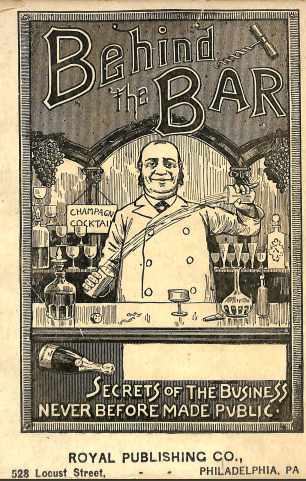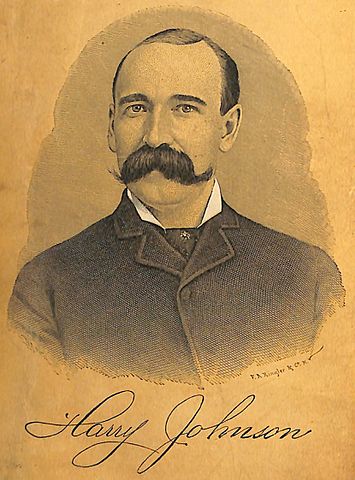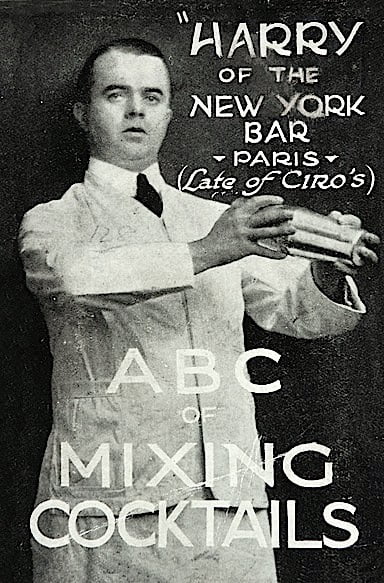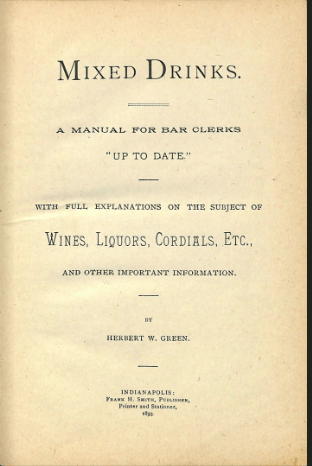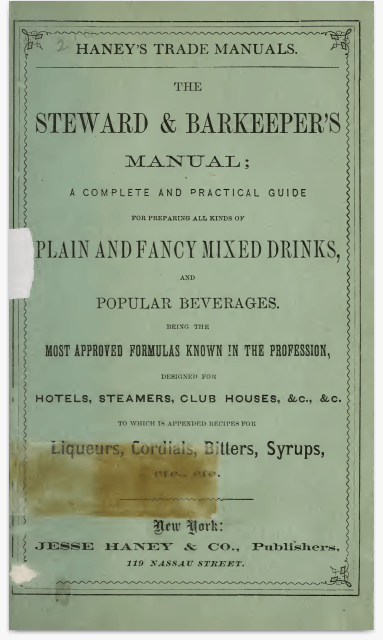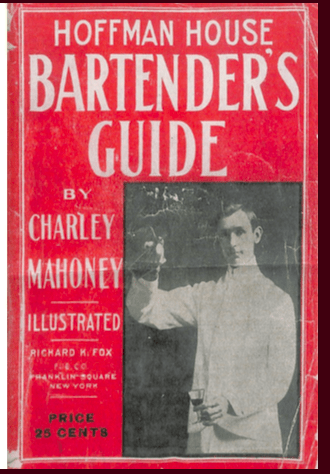Table of Contents
When I searched for “What is Bartending,” the first few results were about how to make and serve drinks, collect money, do inventory, and a few offers for crash courses on becoming the most incredible mixologist out there in no time.
All the abovementioned duties are essential to the bartender’s job description and expectations. Still, all the bartenders are button pushers; it’s another job until something better comes. I hope not.
I believe there is more to being a job; Bartending is a craft, a form of art where your tools, instead of brushes and paints, are tastes, aromas, and textures, creating dreams and memories.
Being human, though, my other self – cast natural doubt over my beliefs that bartending is a craft. To paraphrase Shakespeare loosely, to be crafty or not to be crafty, I decided to go back in distant times and see what our predecessors thought of what it took and what the expectations were to be a bartender.
A while ago, I came across extensive bar book collections dating back to the late 1700s. I usually spent considerable time looking at recipes and how bartenders made their drinks until I realized the recipes were not essential to the books.
The first few pages of some of these books were equally, if not more, necessary for the development and appreciation of the craft of bartending, so I decided to see what their expectations for barkeepers were from the 1850s to the 1950s.
If one were to create a “Tips and Hints Manual for Bartenders,” using the standards and expectations of the 1800s to the early 1950s, would their criteria still apply in our time?
Are we better, worse, or the same as them in our perception of what it takes to be a bartender?
No, I’m not talking about the technical side of our job, mixing, shaking, etc.; I’m speaking about the appearance, love of what you do, positive attitude, and respect for the craft.
I decided to look at a few different criteria, which, for me, are some of the defining factors of bartending;How to treat a patron, Rules, and Hints for bartenders, Bar prep and serving, and Don'ts.
Patron Treatment 1 2 4 6
How a customer is treated is crucial in the service industry.
Being mean, rude, and condescending towards clients will only lead to nonperforming business or none at all. Regardless of how good the servers and bartenders are, there will be no business without customers.
Here are the common qualities on which the bartenders from the last two centuries agreed without any doubt, and they are the cornerstone of any business in the service industry.
| The first rule to be observed by anyone working as a bartender in our business is to treat all customers with the utmost politeness and respect. |
| No man employed in our business should make distinctions between poor and rich. |
| Whether rich or poor, all the customers should be served with the same respect and quality of goods.” |
| Customers on account of their appearance. As long as they behave like gentlemen, they should be treated as such, no matter what business they pursue. |
| When waiting on customers, at any time, it is of the highest importance for a bartender to be strictly polite and attentive in his behaviour and, especially, in his manner of speech, giving prompt answers to all questions as far as lies in his power; he should be cheerful and have a bright countenance.¹ |
| Efficient, paying attention to details, remembering the regulars, habits, and usual drinks. |
| Observe the newcomers and always ask how they would like their drink to be prepared.” ² |
| “A good listener is a wise man” ⁴ – treat all the customers the same way, poor or rich. |
| To know how a customer desires the drink to be mixed, always study the customers’ tastes and make the drinks according to their taste ⁵. |
| Never leave a customer until properly served, even if the place is bustling. Don’t appear to be rushing the quest service just because there is a line. |
| Tact is not just talent; only talent is half the quality needed. “The Tin Trumpet, ” published in London in the latter part of 1700, says, “Talent knows what to do; tact knows how to do it. Talent makes a man respectable; tact will make him respected. Talent is wealth; tact is ready money.” Talent makes the world wonder that it gets on no faster; tact excites astonishment that it gets on so fast.6 |
| At the bar, Talent receives compliments, but tact gets clients and fees. |
| These principles can build a reputation, repeat clientele, and long-term business. |
Rules and Hints for Bartenders
Training of new bartender is extremely important, ”teaching him manners, and see him not become impudent to you and the customers”¹- Harry Johnson’s New and Improved Manual – 1888
The books I read described what to look for in a bartender, the expectations of their performance, attitude, smarts, and tact, in great detail, and classified them thoroughly.
It reminded me that bartending is a craft and how important it was for the bartenders to feel proud of what they did. Golden era, indeed!
I’ve summarized the main traits they were looking for in a bartender. To some, it might look like an idealistic approach to creating a perfect, almost impossible image of a barkeeper. Still, on the other hand, if we know the ideal image, we can measure ourselves to it, and at the same time, it will help us improve what we do.
That’s why I think Jerry Thomas, Harry Johnson, Charles S. Mahoney, Herbert W. Green, Harry MacElhone, as well as many others, spent time writing about how important it was for a person to possess certain traits and habits, especially if they wanted to be successful in the craft of bartending.
Bartender Qualities¹ ⁵ ⁷
Neat with a good appearance
Properly groomed
Well dressed
Polite
Awake, prompt
Quick
Respect privacy
Takes care of his health
Attentive
Cheerful
A good judge of human nature
Good listener
Friendly
Paying attention to the needs of the customers
Good actor – never shows your lousy mood
Sympathize with those who are not feeling well
According to Haney’s Manual(1869) and Harry Johnson(1888), appearance can be the difference between making or breaking the bartender’s career and can be detrimental to the business.
“The way the bartenders carry themselves behind a bar and their impression on the clientele is an important part of how people view our craft”.¹ – Harry Johnson
“Great detail to attention was placed on how the bartenders were dressed and what first impression they were going to leave with the guest”.³ – Haney’s Steward & Barkeeper’s Manual
Bar prep and serving
Cleanliness is next to goddiness” ⁸ – John Applegreen’s Barkeeper’s Guide, 1904.
Bar prep is a crucial step, and the bartender should never rush, as it can make or break your day. It sets up the whole shift for the day, and if a bar station is not ready before opening, it might put you behind right from the beginning. Trying to catch up while making drinks on a busy day is not fun.
Bar prep station and serving standards4 5 8
| Clean and fresh-smelling room | Do everything in full view |
| Ready garnish | Never use the same ice twice, shake as hard as you can to wake up the flavours |
| Use fresh and best ingredients available | Put ice in the glasses before pouring the drink. Chilled glass=cold drink |
| Workplace setup | Serve the alcohol at the appropriate temperature |
| Use only dry polished glasses, not wet | Never leave a customer until properly served, even if the place is busy.⁸ |
| Measure accurately to preserve the intended flavour of the cocktail you are making | “I’m busy” is not an excuse for not properly serving customers. |
| Follow the recipe and always mix the drink properly; don’t deviate, as it creates inconsistency unless a guest asks. | Clean the counter; it always should have a clean appearance |
| Mix the drink above the counter and in full view of the customer | Clean the glasses and put them where they belong – it saves time |
| End of day | Before you leave your shift, make sure everything is ready for the next |
“A good bar-tender can always be told by the way his bench looks”.
Harry ‘s ABC of Mixing Cocktails – 1930
I understand, and I’ve seen some bartenders thrive in chaos behind the bar; somehow, they find everything they need immediately if they work alone. But there are a couple of things that need to be considered.
- How does the bar look from a customer’s point of view? Is it clean and tidy? What message does it convey – professionalism and cleanliness? Perception is reality, and if the guest’s perception of the establishment is unfavourable, we will probably lose a paying customer.
- Usually, we are not working behind the bar alone; we put everything back in place and make it easy for everyone to find the things needed, significantly increasing the speed of service and reducing stress levels.
Don’ts for the Young Bar Clerks
What to do or not to do while working are parts of the same equation. The sum of which is Customer Service, and it can be expressed as subtraction;
CS = dos – don’ts
Dos is all the Bartender mentioned above qualities and serving standards.
Don’ts are the ones from the table below.
Identify how many Dos and Don’ts you have and subtract them. A higher result leads to a higher level of Customer service.
Don’ts6
- Don’t join in any conversation.
Don’t let them feel you begrudge the space they occupy while talking.
Don’t look fiercely at people or talk loudly and harshly; cultivate a smiling countenance and quiet but firm tone of speech.
Don’t drink with the customers. - Don’t let a guest leave dissatisfied – losing money on one drink is nothing compared to keeping or gaining a new customer.
If you don’t treat the customers the way they are expected to be treated, there are many other places where they can go. - Don’t try to increase the revenue by selling cheaper/inferior products – you might have a little bit less profit,
but you will gain a reputation and put you ahead of your competition. Make people feel they are getting the worth of their money.
Don’t expect to make fine drinks with cheap ingredients. - Don’t occupy too much space, but give your colleagues behind the bar a chance.
Please don’t fail to put things in their places so that you and your co-workers will always know where they are.
Don’t attempt that problematic feat of pouring cocktails, sours, etc., at long range until you have practiced some on clear water.
Don’t let liquids and empty glasses accumulate on the counter. - Don’t give a man a drink when he has had enough.
Don’t work with great confusion; it will appear you are not up to the situation.
Be informed, read the news. - Don’t smoke.
*Don’t wait too long before you get married.
*Note: I am unsure if it is applicable these days; nevertheless, it was mentioned in the book – p.160, so it had to be very important at that time.
Summary
After reading all these great books on bartending, I felt transported back in time. Every piece of advice they gave sounded familiar to me, as if it had been written in our time. I realized the ideas and hints these bartenders shared with us were not just about how to make drinks; they were also about how to be a better person, a better human being (eat healthily, drink moderately, don’t smoke, keep in good shape, have a family, etc.).
They also tried to convey that bartending is more than just a job. It would be best to be humble with the right mindset, motivation, positive attitude, willing to learn and listen to others. You will discover that bartending is a craft; learning and improving is part of the journey, like any other craft.
Even though these books were written by bartenders long ago, they are still as contemporary as they can be in different eras.
Every piece of advice still can be applied today, and even if we get the desire and the love for what they did, I can say for sure these great bartenders succeeded in creating the base for the Art of Mixing and Bartending we know today.
Ok, Almost Done
With the cocktail renaissance from the late 1990s to the early 2000s, one wonders why a cocktail is not Fizz, Collins, or Julep Renaissance worldwide. These drinks used to be more popular than cocktails and are delicious beverages like the other drink families.
I think the “problem” was that they all had one thing in common: Definition.
They are defined by particular rules for how they are made. I only have to change the liquor if I make Sour or Fizz. If I start changing other ingredients, not Sour or Fizz, the drink families are limited in one crucial feature: creativity.
On the other hand, the cocktail is not defined in the same way, naturally leading to the following question: What is a cocktail?
If we look at it as a drink, the cocktail has limited use. It is a stimulating drink, aperitif, to stimulate the appetite. It is not a drink served after dinner or late afternoon, so why has it become so popular?
In the early 1800s, the cocktail more or less followed the definition of choice of any liquor, sugar, water, and bitters. Still, with the creation of new liqueurs and modifiers, unique “fancy” cocktails were starting to be part of the menus. With the lack of structured rules and definitions, like with Daisy, Fizz, or Crusta, the cocktails slowly changed their meaning of being only before dinner drinks.
In current times, the term cocktail, for most people who are not bartenders, can be used to describe any drinks out there, like fruity martinis, after-dinner drinks, or anything that looks fancy, and I think this is a good thing.
People are not concerned with what the word cocktail means. They want to have well-made drinks, drinks they’ve never tried before, something unusual, and the cocktail’s lack of proper definition allows the bartenders to accomplish precisely that.
By not being confined by strict rules like in the drink families, the bartenders can let their imagination loose and have fun. Vive le cocktail!
PDF version
What is Bartending – no flip book effects
credits: Cocktail definition image – public domain
Footnotes
- New and Improved Manual (1888) by Harry Johnson 𝓻𝓮𝓽𝓾𝓻𝓷
- How to mix drinks- The Bon Vivant companion, 1862 Jerry Thomas 𝓻𝓮𝓽𝓾𝓻𝓷
- Haney’s Steward & Barkeeper’s Manual – 1869 𝓻𝓮𝓽𝓾𝓻𝓷
- Hoffman House – Bartender’s Guide (1912), by Charles S. Mahoney 𝓻𝓮𝓽𝓾𝓻𝓷
- ABC of Mixing Cocktails (1930) – Harry MacElhone 𝓻𝓮𝓽𝓾𝓻𝓷
- Mixed drinks – Manual for bar clerks, 1895 by Herbert W. Green 𝓻𝓮𝓽𝓾𝓻𝓷
- John Applegreen’s Barkeeper’s Guide- revised edition, 1904 𝓻𝓮𝓽𝓾𝓻𝓷
- King Cocktail Shake, 1954 𝓻𝓮𝓽𝓾𝓻𝓷


